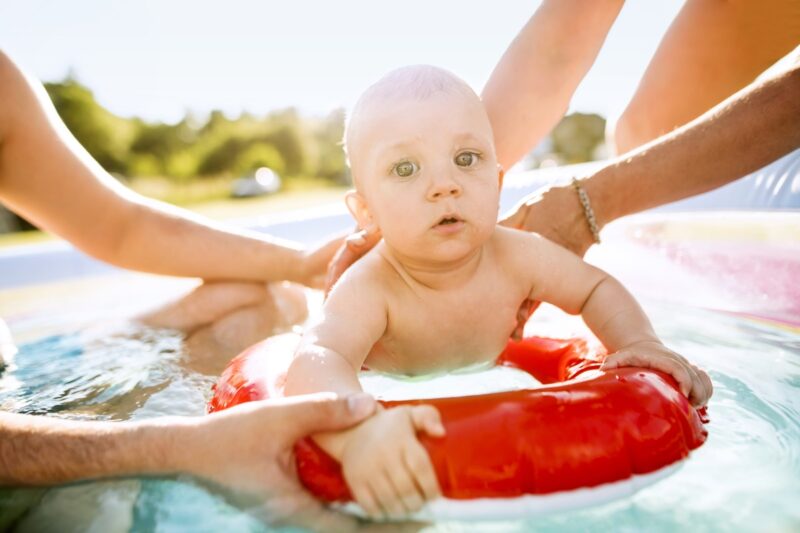
Swimming is an important skill that all children should learn. We have all seen videos of newborn babies swimming underwater. So when should you take your baby to the pool and when is it safe to dunk a baby underwater? Let us answer that for you!
There are many different types of swimming lessons on the market. Mommy and me swim lessons help little ones get comfortable in the water, while infant swim lessons focus on survival. During both of these, safety is always a top priority!
So what’s the verdict? Is it safe to dunk a baby underwater? Your safest bet is no!
Infants may naturally hold their breath on occasion, but they are more likely to swallow water. This is one of the reasons why babies are susceptible to the bacteria and viruses in pool water and lakes that can cause gastroenteritis and diarrhea.
While dunking little ones underwater aggressively can be scary. Babies will not understand the purpose of the action. This might lead to mistrust of water later on in life.
However, putting a baby’s face underwater is not out of the question later on. You just need to be slow and gentle. Try using bath time as a way to introduce your child to the water. You can even use their favourite toys to make getting into the water more enticing!
How to Teach Your Baby to Go Underwater
1. Be patient and child-centred.
Getting into the water for the first time can be a terrifying and exhilarating experience. Pushing your child too hard can make them less than happy to learn a new skill. Swimming is meant to be fun and you should make sure your baby is happy and secure while doing so!
2. Condition your baby on what to expect
Always let your baby know what you are going to do. For example, make up a signal to tell them when you are going to pour on their face. Count 1,2,3 and then taking a deep breath is one way to communicate with non-verbal cues. Slowly wet small parts of the face such as the cheeks and chin. Your baby might even start putting their face in the water on their own when ready!
3. If you’ve both mastered the “water poured on head” activity, start the next step in the swimming pool.
Before starting this activity, know that your baby can support their head. Hold your baby in front of you in a front floating position (horizontal and facing you). Make eye contact and use the same signal as the previous step. Then dip your baby into the water and slowly submerge them as they get more comfortable. Continue until you feel your baby is ready to submerge their whole face.
4. Don’t forget to use common sense and listen to your gut feelings.
Always trust yourself with your baby in the water. If your little one seems uncomfortable, take a break. Coughs, whimpers and trying to get out of the water are telltale signs that you should not force your baby to swim. Consider the opposite as a good sign. A relaxed, happy and smiling baby is usually ready to put its face in the water.


